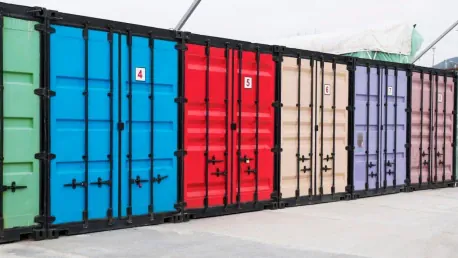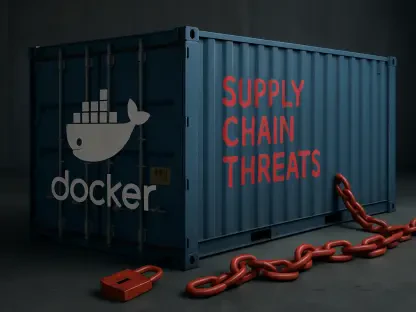In recent years, WebAssembly (Wasm) has become a hot topic among developers and tech enthusiasts, known for its compact binary format and ability to serve as a compilation target for multiple languages. Wasm, often heralded as the fourth web standard, initially made its mark as a technology for running near-native speeds in web browsers. However, its application potential has leapfrogged beyond web development to the server realm, sparking an ongoing debate about Wasm’s capabilities and its potential to replace well-established container technologies like Docker. Central to this discussion are Wasm’s unique attributes: compactness, speed, portability, and security. These features have generated significant interest in its application on servers alongside client use cases.
The Rise of WebAssembly
WebAssembly came into the spotlight as a powerful tool enabling near-native execution speeds within web browsers. Its compact binary format, which can compile code from languages such as C, C++, Rust, Go, JavaScript, and Python, has made it an incredibly versatile technology. Initially aimed at enhancing web development, the scope of Wasm broadened as developers recognized its potential for server-side use, fueling the debate over whether it could eventually supplant containers.
The allure of WebAssembly lies in its capacity to run efficient and optimized code, making it a sought-after choice for various applications. The promise of Wasm is not merely confined to web environments but extends to other domains where performance and security are paramount. Its approach to sandboxing, a method for isolating code execution, makes it inherently secure. This capability renders it an excellent candidate for executing tasks that demand tight security and quick performance, making it a competitor to traditional container technologies in specific use cases. As discussions around its potential continue to grow, the tech community remains divided on whether Wasm can dethrone containers like Docker or merely coexist and complement them.
Solomon Hykes’ Perspective
A significant moment in the debate over WebAssembly’s future in server environments came in 2019, courtesy of a tweet by Solomon Hykes, the co-founder of Docker. Hykes suggested that had WebAssembly and the WebAssembly System Interface (WASI) existed in 2008, Docker might not have been necessary. This remark has often been misinterpreted as a forecast of WebAssembly replacing containers. In reality, Hykes aimed to underscore the significance and potential of WebAssembly rather than predict an imminent replacement.
Hykes later clarified that WebAssembly and Docker containers serve fundamentally different purposes and should be viewed as complementary technologies rather than direct competitors. While containers are excellent for packaging and distributing applications with all necessary dependencies, WebAssembly excels at running lightweight, efficient code securely. This complementary relationship suggests that developers can harness the strengths of both technologies in tandem rather than exclusively choosing one over the other. The conversation around Hykes’ tweet highlights the importance of understanding each technology’s unique capabilities and how they can be integrated to optimize performance, security, and efficiency in various computing environments.
Where Wasm Outperforms Containers
Edge Computing
One of the key areas where WebAssembly shines is edge computing, where the need for lightweight, efficient execution is critical. Wasm’s small and sandboxed modules consume significantly fewer resources than traditional containers, making it an ideal fit for resource-constrained devices commonly found in edge environments. The size difference is substantial, with Wasm modules occupying kilobytes compared to the megabytes or even gigabytes taken up by container images. This efficiency translates to better performance on devices with limited capabilities.
Michael J. Yuan from Second State champions WebAssembly for use cases where software isolation is necessary, but containers are too heavy. For example, edge computing often involves devices like sensors and IoT gadgets that cannot afford the overheads associated with containerized applications. WebAssembly’s efficiency enables faster execution and reduced energy consumption, making it preferable for applications deployed on edge devices. This performance advantage is a significant factor driving the push for WebAssembly in scenarios requiring optimal resource utilization and quick response times.
Performance-Critical Workloads
The appeal of WebAssembly for performance-critical workloads cannot be overstated. Its fast and efficient execution model makes it a strong candidate for tasks that require rapid response times, such as serverless functions and artificial intelligence applications. Enterprises like Fastly have already reported substantial improvements in cold-start times when employing Wasm, an essential factor for businesses concerned with latency and overall performance. This efficiency persuades enterprises to consider WebAssembly over proprietary serverless solutions, which may introduce additional overheads or vendor lock-in.
Moreover, Wasm’s ability to execute code quickly and securely without the need for a full container runtime environment provides savings in both time and resources. This performance edge is particularly beneficial for applications that need to scale dynamically, handling varying loads efficiently. Tasks such as AI model inference or real-time data processing can see significant benefits from Wasm’s quick initialization and execution capabilities, potentially reshaping how enterprises approach performance-critical workloads in cloud and edge scenarios.
Component-Based Architectures
A growing trend in software development involves moving towards component-based architectures, where applications are built from modular components that can be independently developed, deployed, and maintained. The WASI specification is pivotal in driving this ecosystem of modular components, and WebAssembly is at the forefront of this movement.
WebAssembly’s smaller footprint, secure sandboxing, and rapid cold starts make it highly suitable for these kinds of architectures. Migrating workloads, especially greenfield ones, from traditional microservice setups to Wasm-centric approaches presents a compelling case for improved performance and security. Developers can leverage Wasm to create modular applications that are both efficient and secure, taking advantage of its default security settings and lightweight nature. This paradigm shift towards component-based architectures highlights the potential of WebAssembly to transform application development and deployment practices, particularly in environments where modularity and rapid scalability are crucial.
Plugins for Server-Side Applications
WebAssembly’s potential isn’t confined to standalone applications but extends to sandboxed plugins for existing systems. Numerous frameworks, including Istio WasmPlugins, Shopify Functions, and Envoy extensions, already leverage WebAssembly to develop secure and efficient plugins. This use case is particularly relevant for enhancing server-side applications without compromising on security or performance.
The ability to run plugins in a secure, isolated environment ensures that even if a plugin behaves maliciously or encounters bugs, it won’t adversely affect the broader system. This security feature is a significant advantage, as plugins often come from diverse sources and may not always undergo rigorous vetting. By employing Wasm for plugin development, organizations can enhance their systems’ extensibility and functionality while maintaining high security and performance standards. This capability is a testament to WebAssembly’s versatility and its growing relevance in various computing scenarios.
Web Apps and Services
WebAssembly’s roots lie in enhancing browser-based applications, and its prominence in this domain remains unmatched. Wasm powers high-performance web applications, such as those developed by Adobe, delivering swift and secure execution for tasks that were previously challenging to perform within a browser environment. This capability has revolutionized how web applications are built, enabling more complex and resource-intensive applications to run efficiently on the client side.
By leveraging WebAssembly, developers can create web apps that offer near-native performance, providing a seamless user experience. This performance boost is particularly beneficial for applications that involve real-time processing or complex computations, such as graphic design tools, video editing software, or scientific simulations. The widespread adoption of WebAssembly in web development underscores its continued relevance and effectiveness in running short-lived programs swiftly and securely, making it an indispensable tool for modern web applications.
Where Containers Outperform Wasm
Long-Running Server Processes
Despite WebAssembly’s numerous advantages, there are still areas where traditional containers maintain a clear edge. One such area is long-running server processes, databases, and stateful applications. These types of workloads often require extensive support for persistent states, complex configurations, and seamless interactions with various system resources. Containers excel at packaging and managing these long-term processes, providing the necessary environment and isolation for stable and reliable operations.
Experts generally agree that WebAssembly, in its current state, lacks the necessary functionalities to handle long-running server processes effectively. The technology’s design focuses more on short-lived, stateless tasks, where security and quick execution are paramount. This limitation makes containers the go-to solution for applications that need to maintain continuous operation, handle intricate state management, or when there is a need to interact closely with the underlying operating system and hardware.
Large-Scale Server Processes
Another area where containers outperform WebAssembly is in managing large-scale server processes. WebAssembly’s inherent limitations, including its current inability to fully leverage specific OS or CPU features and support for extensive threading or advanced socket communication, restrict its applicability for massive server computations. Containers, with their robust support for such features, are better suited for large-scale deployments that necessitate complex interactions with system resources.
The extensive use of Docker and similar container technologies in orchestrating sizable server environments is a testament to their efficiency and reliability. These platforms have matured over the years, offering a wide array of functionalities to manage large-scale applications efficiently. Containers’ ability to encapsulate applications with all necessary dependencies and maintain consistent operations across different environments makes them indispensable for large-scale server processes, a niche where WebAssembly, at present, cannot compete effectively.
Linux-Based Cloud-Native Systems
Linux has become synonymous with cloud-native systems due to its close integration with container technologies. Over the years, an entire ecosystem has developed around Linux and containers, optimizing the combination for various cloud-native operations. Replacing containers with WebAssembly in this context would not only mean altering application deployment strategies but also require rethinking the Linux ecosystem itself.
The entrenchment of containers within Linux-based cloud-native systems is profound. Tools, workflows, and best practices have evolved to optimize the synergy between Linux and containers, making any significant shift towards WebAssembly a considerable challenge. While WebAssembly has much to offer, especially for emerging use cases, displacing the well-established and deeply integrated container environment present in the Linux ecosystem remains an uphill battle.
Modest Runtime Overheads
While WebAssembly reduces latency for certain tasks, there are scenarios where minimizing runtime overhead or accessing low-level system primitives is crucial. Native code execution, encapsulated within containers, often outperforms WebAssembly in these situations, providing more direct access to hardware and system resources.
Certain workloads necessitate minimal runtime overhead and direct interaction with system-level features to achieve the desired performance. Although WebAssembly offers efficient execution, its abstraction layer introduces some latency that might be unacceptable for these performance-sensitive tasks. In such cases, the advantages of container-based native code execution become apparent, maintaining containers as the preferred solution for workloads requiring fine-grained control over runtime performance and system interactions.
Integration into the Container Ecosystem
Despite the areas where WebAssembly currently falls short compared to containers, there are ongoing efforts to integrate Wasm into the existing container ecosystem. Projects like the Cloud Native Computing Foundation’s WasmEdge are working towards seamlessly embedding WebAssembly into Kubernetes clusters. This integration allows WebAssembly modules to cohabitate with containerized applications, offering the best of both worlds.
Such initiatives aim to leverage the strengths of both technologies, enabling developers to use WebAssembly’s lightweight and secure execution for specific tasks while relying on containers for more complex and long-term processes. Future iterations could see Docker supporting various container types, including WebAssembly modules. However, the demand for these integrations appears limited at this stage due to the nascent nature of server-side WebAssembly applications. Nonetheless, the potential for closer integration between WebAssembly and container technologies points towards a future where the two can complement each other effectively in diverse computing environments.
The Future of Wasm and Containers
Looking ahead, it is evident that WebAssembly will carve out significant niches, especially in edge computing, serverless functions, and browser applications. These areas benefit greatly from Wasm’s unique features like compactness, speed, and security. However, containers will continue to dominate the landscape for long-running, stateful, or OS-integrated processes. The current trajectory suggests a future where WebAssembly and containers coexist harmoniously rather than competing directly against each other.
Both WebAssembly and containers possess distinct advantages that make them suitable for different use cases. The continuous evolution of these technologies will likely see them addressing unique challenges and optimizing cloud and enterprise computing paradigms collaboratively. By leveraging the strengths of both WebAssembly and containers, developers can create more efficient, secure, and performant applications, driving innovation in cloud infrastructure and beyond. This complementary relationship underscores the broader consensus in the industry, pointing towards a balanced view of these technologies and their roles in future computing solutions.









